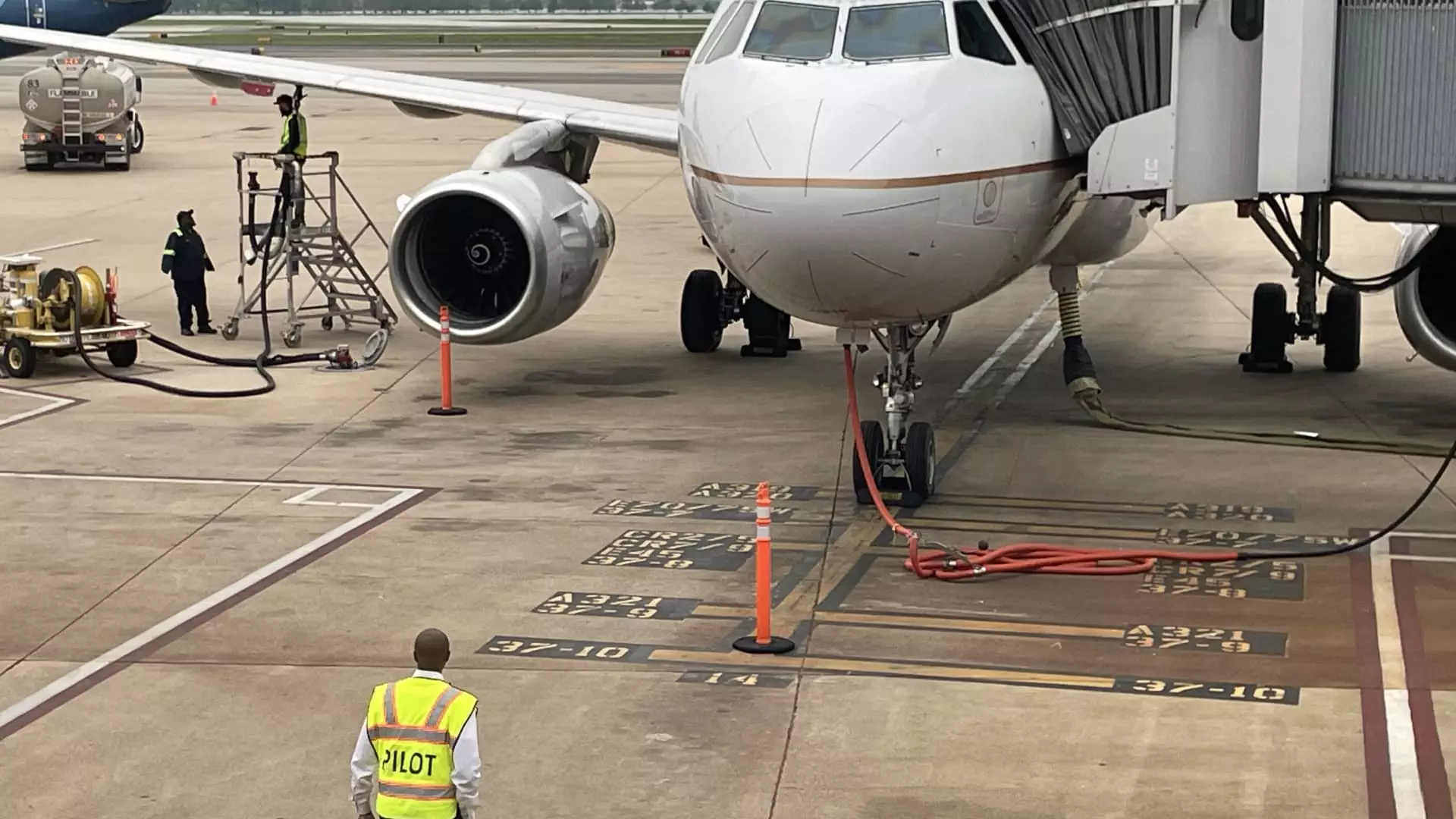The U.S. passenger airline industry experienced a significant workforce expansion, adding nearly 194,000 jobs since 2021, as reported by the U.S. Department of Transportation. This uptick was primarily fueled by companies urgently looking to recover and stabilize after the extensive downturn caused by the COVID-19 pandemic. Airlines had to pivot quickly to meet the surging travel demands that emerged in the wake of the pandemic, leading to a robust hiring spree. However, as of now, the hiring momentum has begun to slow, indicating that airlines are nearing their optimal staffing levels—a development that warrants closer examination.
The recent hiring slowdown can be attributed to a convergence of factors shaping the aviation sector. One of the most pressing issues is the overabundance of flights currently being offered in the U.S. market, which has led to reduced ticket fares and subsequently squeezed profit margins for airlines. With profit growth plateauing, many airlines are reassessing their future hiring strategies.
In addition, there are external challenges affecting operational efficiency. Major manufacturers Boeing and Airbus are struggling to deliver aircraft on schedule, impacting airlines’ expansion plans. The current supply shortages of engines are compounding this issue, leading some airlines to defer aircraft deliveries altogether—a strategy that wasn’t on the radar just a year ago. The ripple effects of these operational challenges are forcing companies to adopt a more cautious approach, emphasizing cost-cutting measures rather than aggressive recruitment.
Labor costs in the airline industry have been on the rise, marked by significant new contracts for pilots and maintenance personnel that include substantial pay raises. The average annual salary for a first officer on a midsized aircraft has jumped from approximately $135,896 in 2019 to around $170,586 as of March 2023. Such increases in compensation reflect both a growing recognition of the critical roles these professionals play and the industry’s efforts to retain talent in light of the previous pilot shortage, which had forced many regional carriers to offer enticing bonuses to attract new recruits.
As a result, operational costs across major U.S. airlines have increased by double-digit percentages compared to pre-pandemic levels. American Airlines, for example, anticipates a 20% rise in operational expenses this year alone, while Delta and United Airlines forecast increases of around 28%. The context is even more severe within low-cost carriers, with Southwest Airlines projecting a 32% rise and JetBlue reporting an increase of nearly 35% over the same timeframe. Such substantial cost escalations necessitate a reevaluation of business models and pricing strategies throughout the sector.
The consequences of profit pressures have manifested in a series of operational adjustments. Notably, Spirit Airlines has recently furloughed 186 pilots due to heightened financial losses exacerbated by an unsuccessful acquisition attempt, supply chain disruptions, and excessive market capacity. Their situation serves as a stark reminder of how volatile the airline market can be, especially when mergers fail.
Other carriers are responding to shifting market dynamics by easing hiring waves or exploring alternative cost-saving avenues. For instance, Frontier Airlines continues to hire pilots but is also offering voluntary leaves of absence during traditionally low-demand months. Likewise, Southwest Airlines intends to trim its workforce by 2,000 employees by the end of the year, shifting to a more controlled hiring trajectory. United Airlines has similarly adjusted its expectations, reducing both the number of new hires and pilots it plans to incorporate.
Despite current challenges, the outlook for the airline industry remains cautiously optimistic. Historical patterns suggest that travel demand will not disappear; it may simply evolve. American Airlines’ CEO, Robert Isom, indicated last year that their hiring practices would stabilize, focusing on sustainable growth moving forward. Meanwhile, training institutions like Embry-Riddle Aeronautical University are still filling classrooms, suggesting a commitment to preparing future pilots despite a temporary slowdown.
The trajectory of U.S. passenger airlines demonstrates the delicate balance the industry must strike between managing immediate operational challenges and planning for future demand. As airlines navigate this multifaceted landscape, strategic foresight will be essential in enabling not just recovery but sustained growth and resilience in the face of an ever-changing environment. The interplay of market forces, labor dynamics, and operational efficiency will continue to shape the future of air travel, even as passenger demand remains steadfast.

